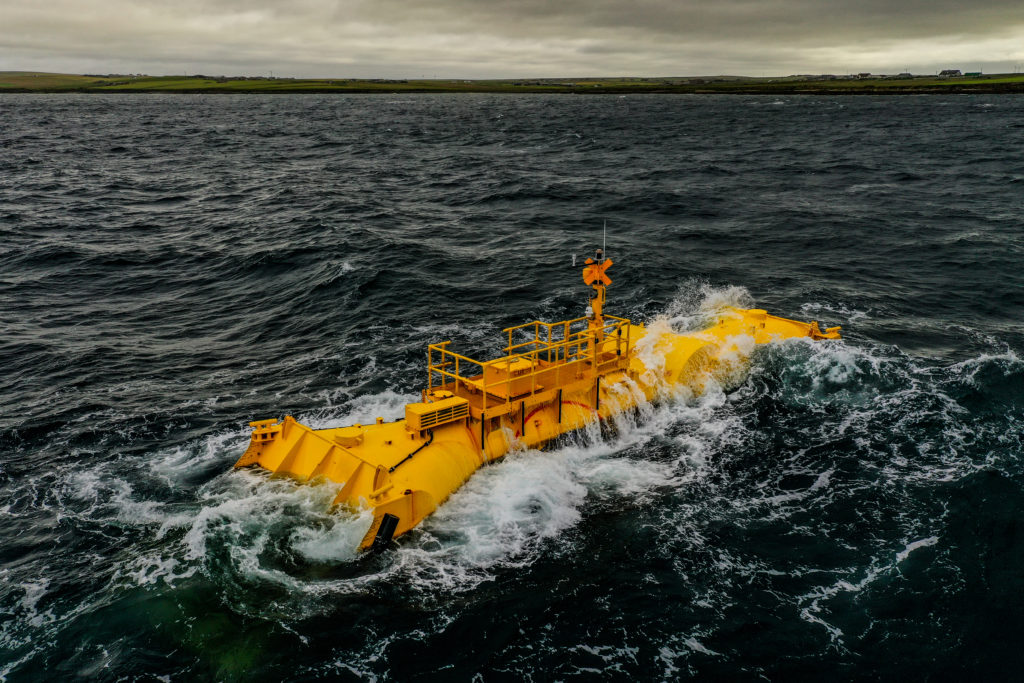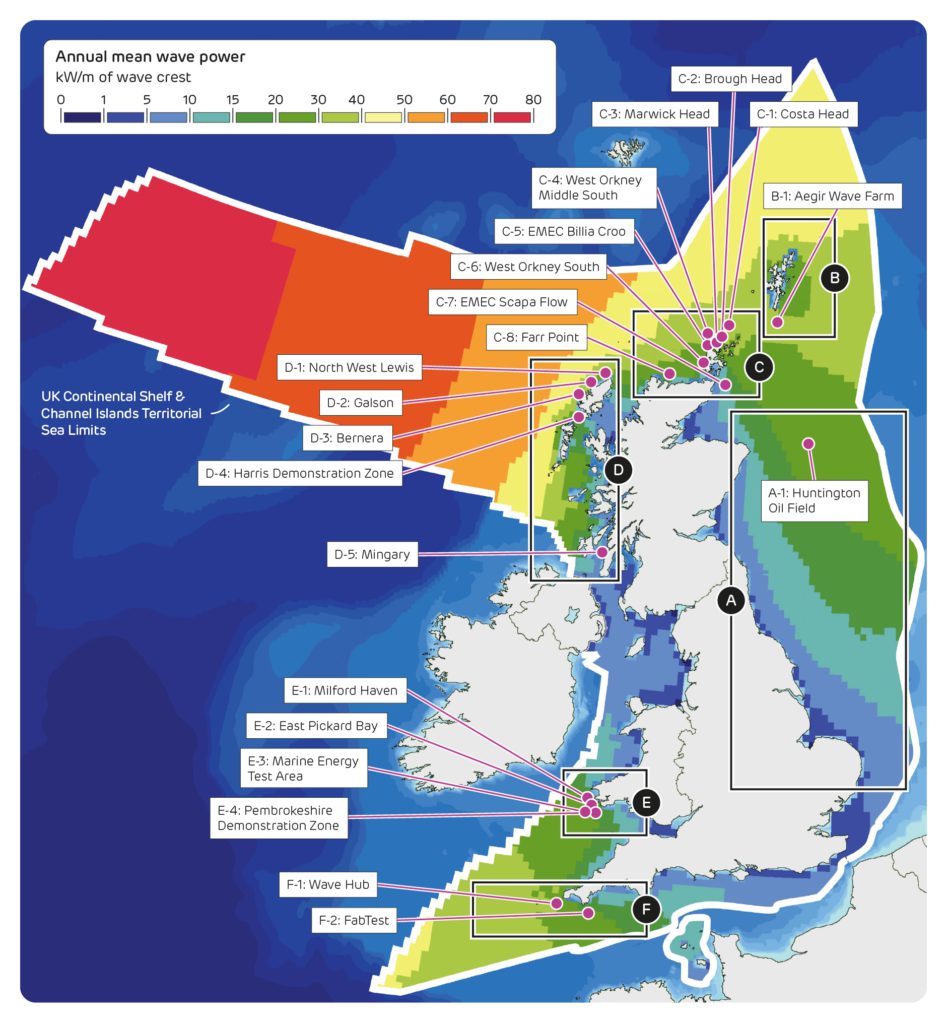Q1 2024: The emerging role of wave power
Download PDF
Britain is surrounded by waves, and harnessing their energy could play a role in our transition to Net Zero. The Renewables for Subsea Power (RSP) project is one of the latest demonstrators, operating successfully off the coast of Orkney over the last year. Wave power is still in the early R&D phases, with demonstrators like RSP targeting specialist applications, but with continued work it has the potential to power up to a sixth of Britain’s electricity demand.
The marine energy sector covers both wave power, devices that convert the motion of waves into electricity, and tidal power, which uses the height difference between high and low tides to drive electrical turbines. The £2m RSP project combines ocean wave power with batteries located under the ocean. This balances out the intermittency of the waves, providing a continuous power supply to marine equipment such as offshore platforms or autonomous underwater vehicles used in environmental research and safety inspections of subsea cables and pipelines. The project has attracted Shell and TotalEnergies as partners, as major oil and gas companies seek ways to decarbonise their operations. This is an example of a high-value application which can act as a stepping stone towards larger deployments, in much the same way as the space race paved the way for cost reductions that led to terrestrial applications for solar panels.
The Blue X wave energy converter, built by Edinburgh’s Mocean Energy, operating off the coast of Orkney within the EMEC Test Centre. The converter is connected to a Halo underwater battery developed by Aberdeen’s Verlume.

There are dozens of wave energy sites worldwide, demonstrating machines from 1 kW up to tens of MW in scale. Just as the UK is at the forefront of offshore wind energy, many of these are hosted at UK testing facilities (see map). For example, Orkney hosts the European Marine Energy Centre (EMEC) which is a test bed for multiple technologies from UK and European manufacturers.
The UK’s key wave energy hotspots, and the strength of wave energy resource, measured in terms of the average mean power produced per metre of wave converter. For context, the Pelamis design was ~150 m in length, and the Oyster design is ~25 m in width. Reproduced from Jin & Greaves, 2021, with data adapted from the Renewables Atlas.

Scaling up these machines to supply a notable portion of national electricity demand relies on overcoming technical challenges around the extreme marine environment, and especially on reducing costs – as is common among all earlystage technologies. Wave energy converters are currently more expensive than floating offshore wind, which is in turn more expensive than conventional (fixed-bottom) offshore wind. Research investments from UKRI and Wave Energy Scotland are targeting cost reduction, for example through novel materials that are flexible and deformable to replace steel, or new forms of power take-off. Just as conventional offshore wind saw rapid cost declines in the second half of the 2010s, floating offshore wind could follow suit, and give cross-learning that helps wave energy reduce its costs also.
If these challenges can be overcome, the benefits of scaling up wave energy could be two-fold. First, wave energy could bring substantial system benefits as it complements the intermittency of wind farms, reducing the need for flexibility options such as long-duration energy storage (which is also very costly). Wave energy matches the seasonality of electricity demand, being higher in winter than in summer, and its output is offset from the profiles of other variable renewables, as well as being more predictable. Tidal energy on the other hand is available in highly predictable cycles, as tides are controlled by the orbit of the moon. The second benefit is that Britain has an opportunity to capitalise on its leading role in R&D. Extending this into a lead in deployment could potentially secure the manufacturing benefit to the UK, creating high-tech jobs and the potential for a new export industry.
The UK has seen great success in cutting the cost of offshore wind so it could become a central part of our electricity system. This was helped by effective policy frameworks such as Contracts for Differences (CfDs), offering a potential route forwards for marine energy. The UK is leading the world in terms of demonstrations, and the multi-million pound programme of funding by Wave Energy Scotland and UKRI is enabling firms to design, build and test new wave energy devices. Bringing these to market could unlock substantial benefits in terms of reduced system costs and enhanced energy security. By promoting focused investment and supportive policies, the UK could both lead in marine energy technology and also make Net Zero easier and cheaper to reach.
Written in collaboration with the Supergen Offshore Renewable Energy (ORE) Hub – a £16.5 Million Engineering and Physical Sciences Research Council (EPSRC) programme which brings together academia, industry, policy makers and the general public to support and accelerate the development of offshore wind, wave and tidal technology for the benefit of society.